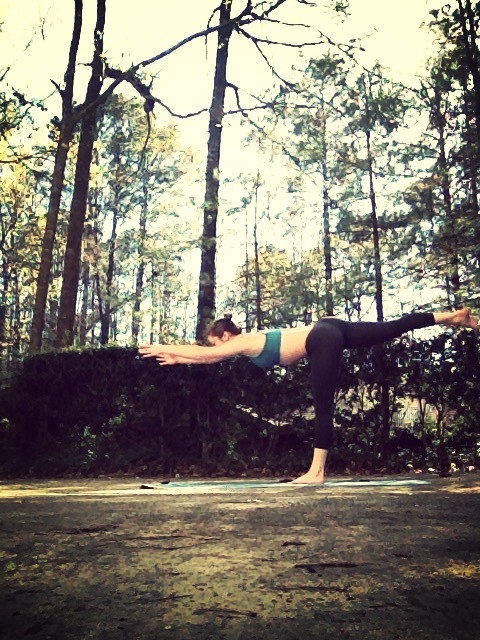In my last article, I laid out my long, tenuous relationship with yoga, and how it has brought me to a place of acceptance both on and off the mat. Today, I wanted to talk about how my practice has allowed me to bring awareness to my physical and mental body through breath.
 You don’t have to be a seasoned yogi to know that a mindful breath is key to a successful and meaningful practice. By cultivating a deep breath, practitioners are able to move deeper into poses, channel energy where it is needed, and bring greater awareness to different parts of the body. When I started yoga, I was acutely aware of my breath, or lack thereof. A combination of stress and persistent anxiety left my breath shallow, further contributing to my resistance to begin yoga anew. Despite all this, as I entered the studio, I knew that channeling energy to the breath would be the most valuable part of my experience.
You don’t have to be a seasoned yogi to know that a mindful breath is key to a successful and meaningful practice. By cultivating a deep breath, practitioners are able to move deeper into poses, channel energy where it is needed, and bring greater awareness to different parts of the body. When I started yoga, I was acutely aware of my breath, or lack thereof. A combination of stress and persistent anxiety left my breath shallow, further contributing to my resistance to begin yoga anew. Despite all this, as I entered the studio, I knew that channeling energy to the breath would be the most valuable part of my experience.
During my first class, I almost had to re-teach my body to breathe properly. I would begin a pose utilizing an ujjayi breath, most prominently featured in Ashtanga and Vinyasa styles of yoga. This closed-mouth breath activates the diaphragm, first filling the lower belly and eventually moving into the upper chest and throat. Within minutes of activating this breath, however, I would let it return to normal, inhibiting any real ability to execute my poses with measured prowess. This continued throughout the class, with my instructor encouraging us to bring renewed awareness to our physical bodies.
Of course, awareness of breath is more than a physical activity. It challenges us to enter a meditative state, one that asks us to channel our focus and energy into a singular endeavor. In our modern world, we are conditioned to believe that a calm, purposeful mental state is antithetical to a productive existence. To the contrary: research has shown that meditation and concentrated breathing enhance productivity because they increase our capacity to resist urges. Sure, multitasking is sometimes inevitable, but it is valuable to at least become aware of our natural tendency overcommit. I’m terribly guilty of multitasking. Whether at work, on the phone, or simply doing laundry in my basement, I’m always seeking an opportunity to pack in more thoughts and achievements into my day. However, since beginning my yoga practice, I’ve begun to de-clutter my mind through a deep breath. The moment I begin to feel anxious, I initiate a few deep breaths as I would in yoga class, and they are effective in mollifying some of my most overwhelming thoughts.
In my opinion, one of the most valuable aspects of yoga is its applicability to so many areas of life. Virtually every moment on the mat presents some learning opportunity; whether it’s becoming more humble, compassionate (to myself and others), or patient, I can embrace these lessons in a succinct 90 minutes. I don’t mean to characterize yoga as a panacea, but I do think anyone can benefit from the practice if they enter with an open mind and heart. As someone who once eschewed yoga as something that might only benefit a cross section of hippies and the alternative medicine crowd, I’ve learned that my stubbornness prevented me from realizing yoga’s many universal applications. I’m so grateful that I found yoga. More importantly, I’m grateful yoga found me.
Also see: Giving Yoga A Chance – Part I
The Rainbow Connection: the Chakra System and You
Also in Be Inspired: Why Fall is the Best Season to Get In Shape
___
Photo: Jillian via Flickr




